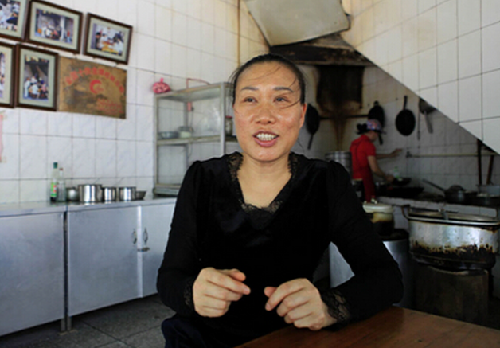Guilin rice noodle: legend related to war
- By Huo Yan and Li Yang
 0 Comment(s)
0 Comment(s) Print
Print E-mail China.org.cn, February 11, 2016
E-mail China.org.cn, February 11, 2016
The rice noodle in Guilin, Guangxi Zhuang Autonomous Region, dates back to the Qin Dynasty (221-206BC), when South China had not yet been conquered by the first Qin Emperor Yingzheng.
|
 |
| Guilin rice noodle [China Daily] |
He sent a 500,000-strong army under General Tu Sui to occupy the places in today's Guangdong and Guangxi. However, the Qin army met strong resistance from local tribes, and were further troubled by the hot and rainy weather as the soldiers came from an area mostly belonging to today's Shaanxi Province in Northeast China.
The war lasted three years. To transport enough provisions to feed Tu's occupation troops, Yingzheng built a canal in Xing'an County of Guangxi connecting the rivers of Xiangjiang in the north with the Lijiang in the south. The two waterways flow into the Yangtze and Pearl rivers respectively.
It took the Qin army another four years to finish the canal project. The soldier-turned construction workers ground local rice into powder and boiled it to produce rice milk, and then processed the latter into noodles. They consumed the boiled rice noodles with pepper, vinegar and salt.
The rice noodle was not only popular among the Qin army, but also warmly welcomed by local residents. It has been passed down from generation to generation in Guilin and surrounding areas to become a staple food in South China now.
As a birthplace of rice noodle, Xing'an County boasts of a number of related eateries. Baolaoye Rice Noodle Restaurant is one of them. It is owned by a businesswoman named Fu Jinrong.
Fu said the Qin army liked the rice noodle for two reasons. First, it tastes like the flour noodle to which they were accustomed. Second, the specially-made brine soup helps people to get rid of the negative influence of the humid weather in Guangxi. She has her own way of making a special kind of brine soup using condiments she has chosen herself.
|
 |
| Fu Jinrong talks about her rice noodle restaurant. [China Daily] |
Fu also adds sliced beef and barbecued pork in her rice noodles, along with dried ground nuts, shallots, caraway seed, pickled green beans and pepper. "Vinegar is the soul of the rice noodles, as well as a testimony to its origin from North China where vinegar is indispensable for noodle lovers," she said.
The success of the dish lies in the brine soup. "I have my secret recipe that needs more than 24 kinds of raw materials, like a prescription of Chinese herbal medicine," she explained.
After boiling these "raw materials" for more than 10 hours, she adds ox bones, sliced pork and pig ears, and boil them together for a long time. She filters off all solid residues from the soup and then colors it with dried brown sugar.
Fu's father-in-law was a rice noodle seller in the 1940s by Wanliqiao Bridge of Xing'an. She learned the skill at 20-year-old, and started running her own rice noodle restaurant. The bridge was built in 825 during the Tang Dynasty. It is the oldest stone bridge in Guangxi today, and has always been a bustling business center.
She remembered one bowl of rice noodle was priced at only 0.07 yuan (one cent) in the 1960s. The price has risen to four yuan now. She thinks it is a pity that people always associate rice noodle with Guilin, but not Xing'an. "Guilin is well known for its picturesque scenery, while Xing'an is only a county in the city."
Despite Fu's romantic story, Yue Qihai, director of Xing'an Museum, says: "It is only a legend that rice noodle was born in Xing'an. So far, there is no concrete evidence to prove it."
That doesn't affect the delicious dish, however.






Go to Forum >>0 Comment(s)